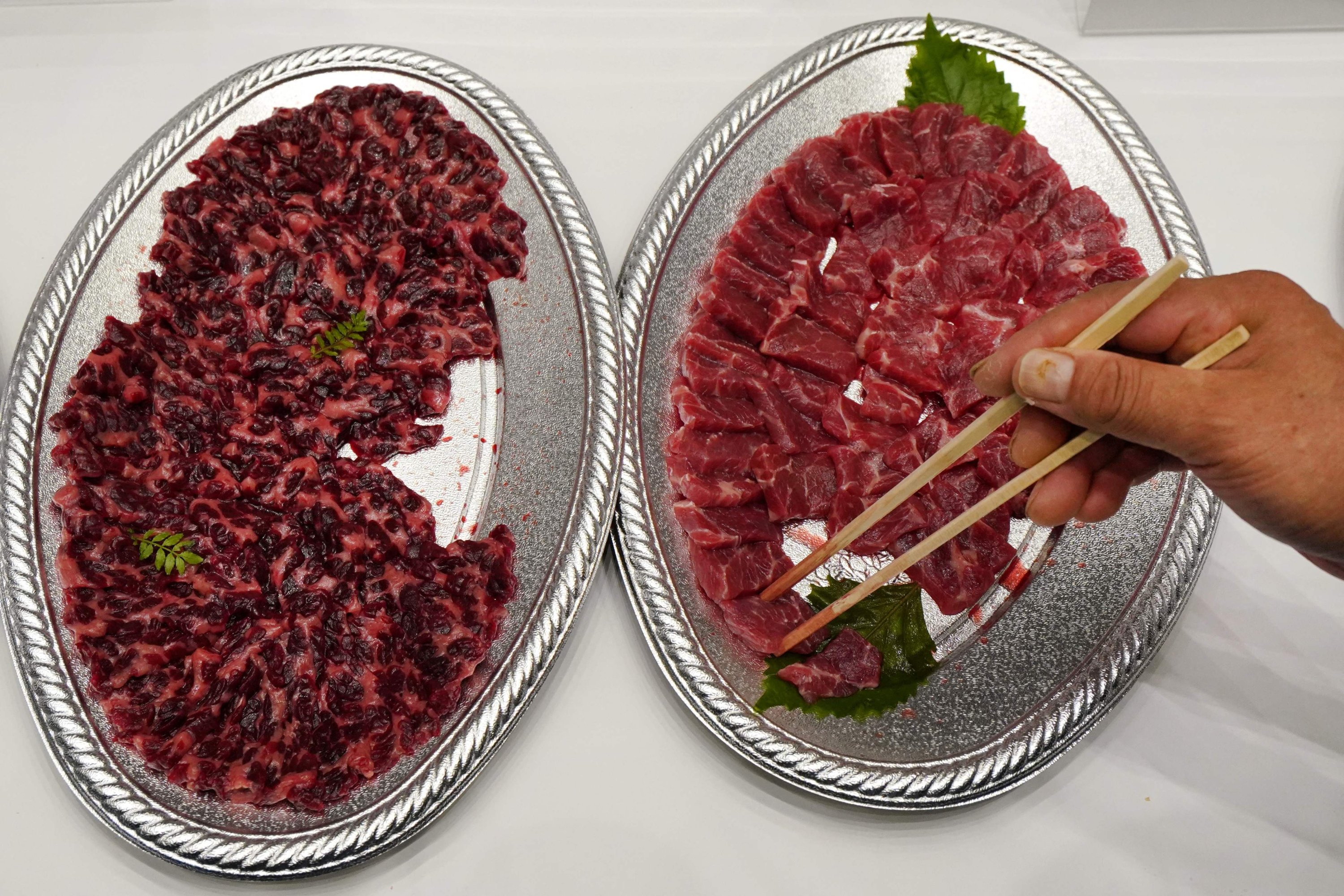[ad_1]
Bite-size portions of fin whale were available to sniff and taste as Japan’s whaling industry seeks to rekindle an appetite for a traditional protein source that has fallen out of favor.
“Once young people eat it and they realize it’s good, they will eat it more and more,” Hideki Tokoro, the head of Japan’s main whaling firm, said at the event at Tokyo’s main wholesale fish market.
“People are excited about the fin whale, it’s just delicious,” he told Agence France-Presse (AFP) in his trademark whale-themed hat and jacket.
Since 2019, Japan has caught whales in its own waters after abandoning under international pressure hunting for “scientific purposes” in the Antarctic Ocean and the North Pacific.
The catch list was limited to sei, minke and Bryde’s whales, but this year fin whales – the planet’s second-largest animal – were added and on Aug. 1 the first killed.
Tokoro’s firm Kyodo Senpaku hopes the taste of fin whales will revive demand and help it recoup the costs of its new 9,300-tonne “mothership.”
Almost every part of the whale was on display, including slabs of heart, slices of tail and chunks of blubber.

Vital source
With three-quarters of Japan mountainous and ill-suited to agriculture, Japan has long relied on the sea – including whales – as a vital source of food.
As imports of other meats have grown, consumption of whale has slumped to around 1,000 to 2,000 tonnes per year compared to around 200 times that in the 1960s.
Kyodo Senpaku this week released footage showing its first fin whale catch. The animal was almost 20 meters (65 feet) long and weighed at least 55 tonnes.
Fin whales are deemed “vulnerable” by the International Union for Conservation of Nature and Japan’s decision to catch them has alarmed conservationists.
Japan’s industry has come under additional scrutiny since the arrest of U.S.-Canadian anti-whaling activist Paul Watson, 73, in Greenland in July on a Japanese warrant.
Watson co-founded Sea Shepherd, whose members played a high-seas game of cat-and-mouse with Japanese whaling ships in the 2000s and 2010s.
Trendy tacos
Anna Okada, a visitor to the event who runs a cafe in the Yamanashi region, said that she is on a mission to jazz up whale meat to appeal to younger people.
“Sashimi and deep-fried whale meat have an old-fashioned image of having a bad smell,” Okada told Agence France-Presse (AFP).
“The popularity can spread quickly when people try and find it delicious,” she said.
“If it’s sold from younger people’s perspective, for example like casual, stylish and tasty tacos, I think it will be popular quickly.”
Some schools are starting to serve it again in their canteens, she said, while products where the whale content isn’t obvious – such as in dumplings – can increase demand.
Keita Ishii, another visitor to the tasting event who works for an “izakaya” pub in Tokyo – famous for their meat skewers – was impressed.
“We’re using Bryde’s whale (for our restaurant). I came here to look for other whale meat today,” he told AFP.
“The fin whale tasted different. It was delicious.”
The Daily Sabah Newsletter
Keep up to date with what’s happening in Turkey,
it’s region and the world.
You can unsubscribe at any time. By signing up you are agreeing to our Terms of Use and Privacy Policy.
This site is protected by reCAPTCHA and the Google Privacy Policy and Terms of Service apply.
Source

Emil Kovács graduated from the Journalism program at Eötvös Loránd University in Hungary. During his journalism studies, he focused on data journalism, investigative reporting, and multimedia storytelling. He gained experience by writing for the university’s student newspaper, where he gained attention for his articles on social issues. After graduation, Emil began working as a reporter at a European news agency, where he conducts in-depth analyses of international news and current events.



